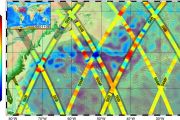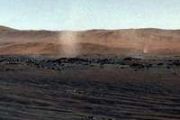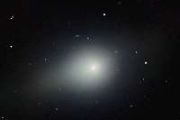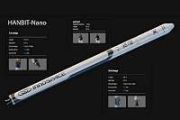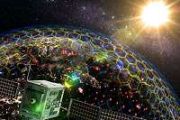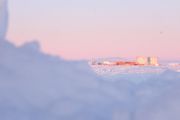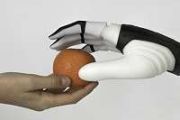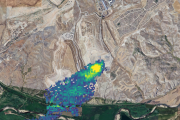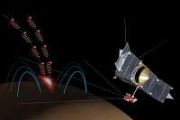
Copernical Team
Huginn flies as Andreas arrives at the Space Station

India's spacecraft is preparing to land on the moon in the country's second attempt in 4 years
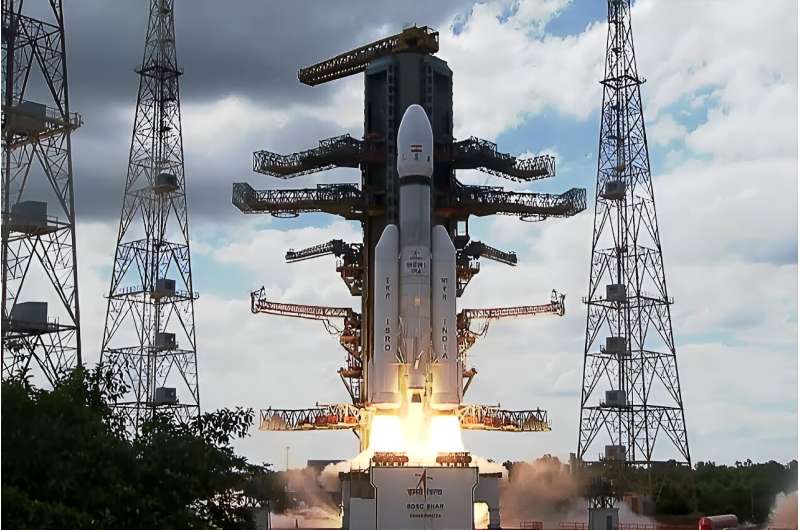
India readied Wednesday to become the first nation to land a spacecraft on the Moon's south pole, days after a Russian probe crashed in the same region.
The latest attempted Moon landing is a historic moment for the world's most populous nation, as it rapidly closes in on milestones set by global space powers.
Chandrayaan-3, which means "Mooncraft" in Sanskrit, is scheduled to touch down shortly after 6:00 pm India time (1230 GMT) near the little-explored lunar south pole.
"India reaches for the Moon", The Times of India front-page headline read Wednesday, with the hoped-for lunar landing dominating local news. "It's D-Day for Moon Mission", The Hindustan Times said.
A previous Indian effort failed in 2019, and the latest attempt comes just days after Russia's first Moon mission in almost 50 years, destined for the same region, crashed on the lunar surface.
Digital modelling to build space missions faster
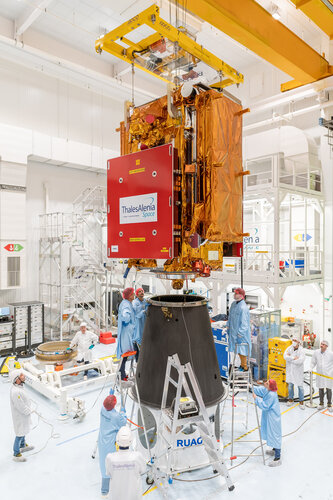
The ‘fit check’ is that moment in a mission’s lifetime when a satellite is first attached to the launcher adapter that will cradle it on its flight to orbit. This is supposed to be a mere formality, but uncertainty is present in its very name: what if these two items, typically manufactured in different parts of Europe, don’t fit together as planned?
India set soft landing on the Moon
 In an eagerly awaited announcement, the Indian Space Research Organisation (ISRO) has confirmed the Chandrayaan-3 mission's Lander Module is on track for a soft landing on the Moon's surface on August 23 at approximately 6:04 pm Indian Standard Time. This development has further ignited nationwide interest and excitement.
ISRO, showcasing its commitment to transparency and public engagemen
In an eagerly awaited announcement, the Indian Space Research Organisation (ISRO) has confirmed the Chandrayaan-3 mission's Lander Module is on track for a soft landing on the Moon's surface on August 23 at approximately 6:04 pm Indian Standard Time. This development has further ignited nationwide interest and excitement.
ISRO, showcasing its commitment to transparency and public engagemen New crew on the block
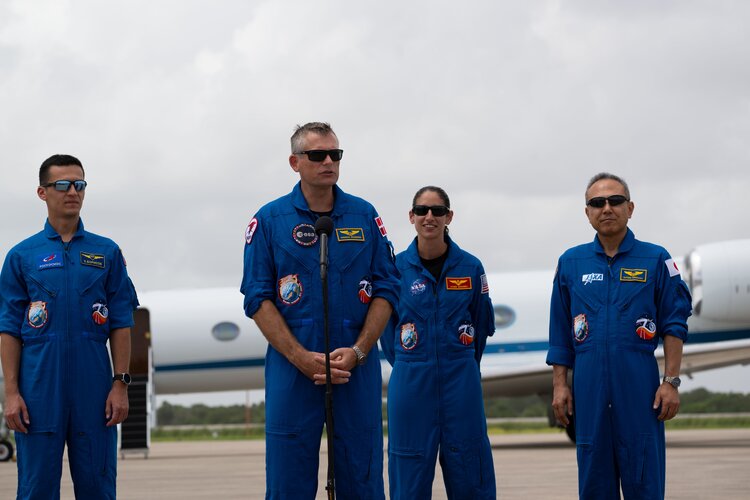 Image:
ESA astronaut Andreas Mogensen with his Crew-7 colleagues on arrival at NASA’s Kennedy Space Center in Florida, USA, 20 August.
Image:
ESA astronaut Andreas Mogensen with his Crew-7 colleagues on arrival at NASA’s Kennedy Space Center in Florida, USA, 20 August. Landslides at the foot of Olympus Mons

ESA’s Mars Express has turned its trusty High Resolution Stereo Camera (HRSC) towards Mars’s most imposing volcano, revealing its dramatic surroundings and turbulent past.
India's historic cut-price Moon mission set for touchdown

India readied Wednesday to become the first nation to land a spacecraft on the Moon's south pole, days after a Russian probe crashed in the same region.
The latest attempted Moon landing is a historic moment for the world's most populous nation, as it rapidly closes in on milestones set by global space powers.
Chandrayaan-3, which means "Mooncraft" in Sanskrit, is scheduled to touch down shortly after 6:00 pm India time (1230 GMT) near the little-explored lunar south pole.
"India reaches for the Moon", The Times of India front-page headline read Wednesday, with the hoped-for lunar landing dominating local news. "It's D-Day for Moon Mission", The Hindustan Times said.
A previous Indian effort failed in 2019, and the latest attempt comes just days after Russia's first Moon mission in almost 50 years, destined for the same region, crashed on the lunar surface.
Sustainability is often an afterthought in space exploration—that needs to change as the industry grows, say researchers
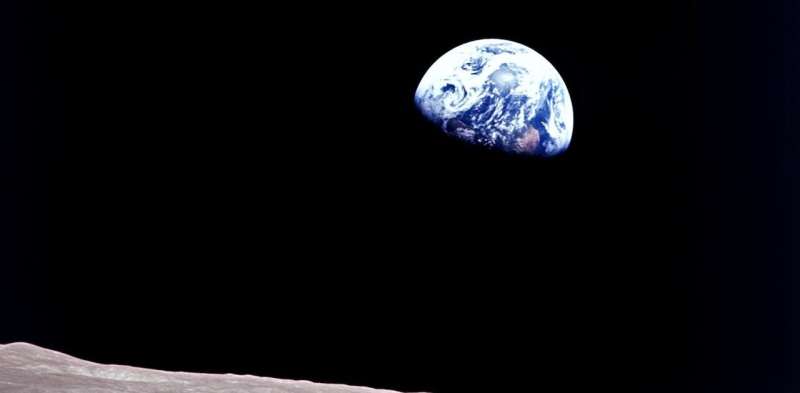
Aotearoa New Zealand is the latest country to enter the expanding and competitive international space market.
In the aerospace strategy and national space policy, the government lays out how it intends to grow the domestic space sector by launching rockets and satellites and promoting Earth observation research.
The documents indicate the government's general priorities in "protecting New Zealand's national interests" and the "responsible use of space".
Sustainability is a focus in both strategy and policy but is used interchangeably in three different contexts:
- To "sustain" the economic development of the industry
- to describe the benefits of aerospace technology for sustainability efforts, like monitoring climate change
- to describe the environmental impacts of aerospace activities, largely focused on space debris, while reducing emissions (though the latter is largely a concern for the aviation industry, not space).
When a part from India's recent rocket launch landed on Australian shores last month, it captured people's attention—and delivered a reminder that Earth's orbits are teeming with the discards of human endeavors in space.
Penetrating radar aboard the Chang'E-4 rover reveals layers of the moon's history
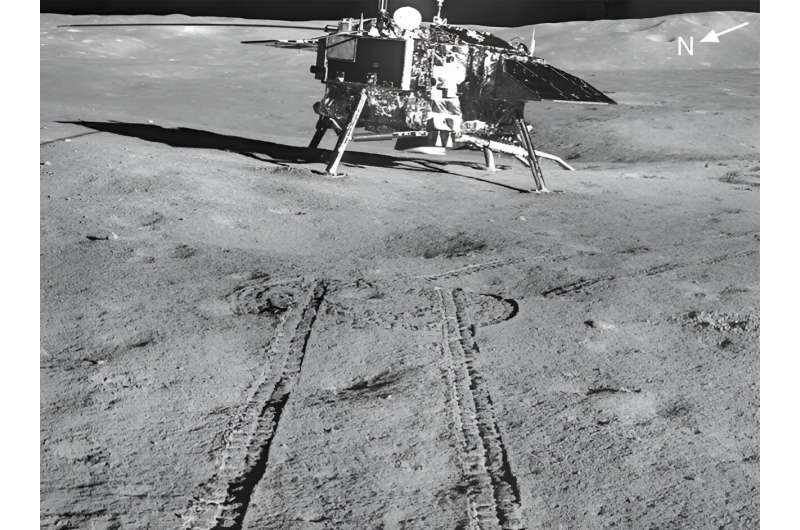
A team of space scientists at the Planetary Science Institute, working with colleagues from the Chinese Academy of Sciences, Shenzhen University and the University of Aberdeen, has used data from China's Chang'E-4 rover to learn more about the history of the moon. In their study, reported in the Journal of Geophysical Research: Planets, the group analyzed lunar-penetrating radar (LPR) data sent back from the rover.
China's Chang'E-4 rover has been wandering around on the far side of the moon since 2018. And during its meanderings, it has been sending radio signals downward using its LPR device.
Study explains how part of the nucleolus evolved
 Inside all living cells, loosely formed assemblies known as biomolecular condensates perform many critical functions. However, it is not well understood how proteins and other biomolecules come together to form these assemblies within cells.
MIT biologists have now discovered that a single scaffolding protein is responsible for the formation of one of these condensates, which forms within
Inside all living cells, loosely formed assemblies known as biomolecular condensates perform many critical functions. However, it is not well understood how proteins and other biomolecules come together to form these assemblies within cells.
MIT biologists have now discovered that a single scaffolding protein is responsible for the formation of one of these condensates, which forms within 


